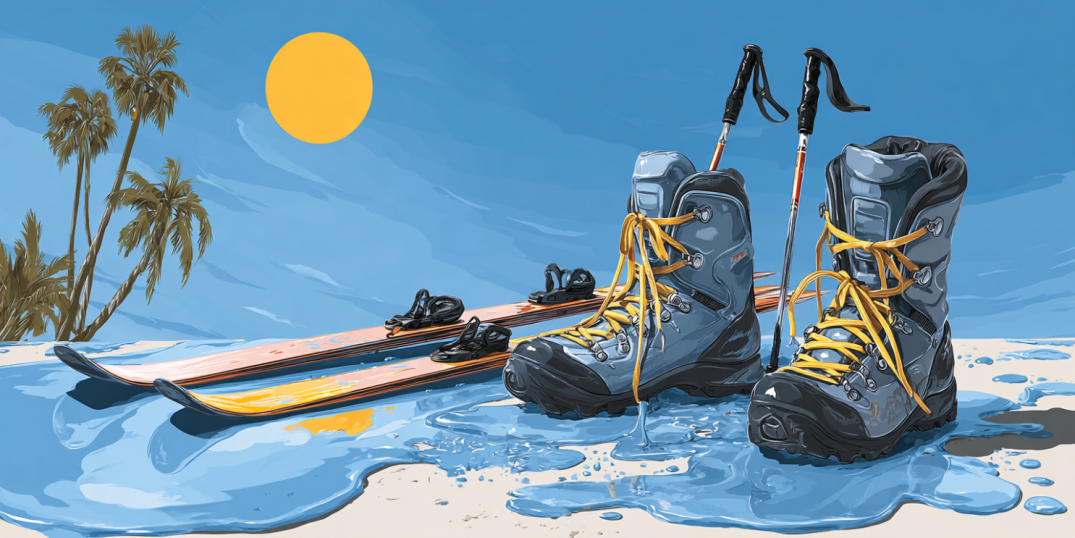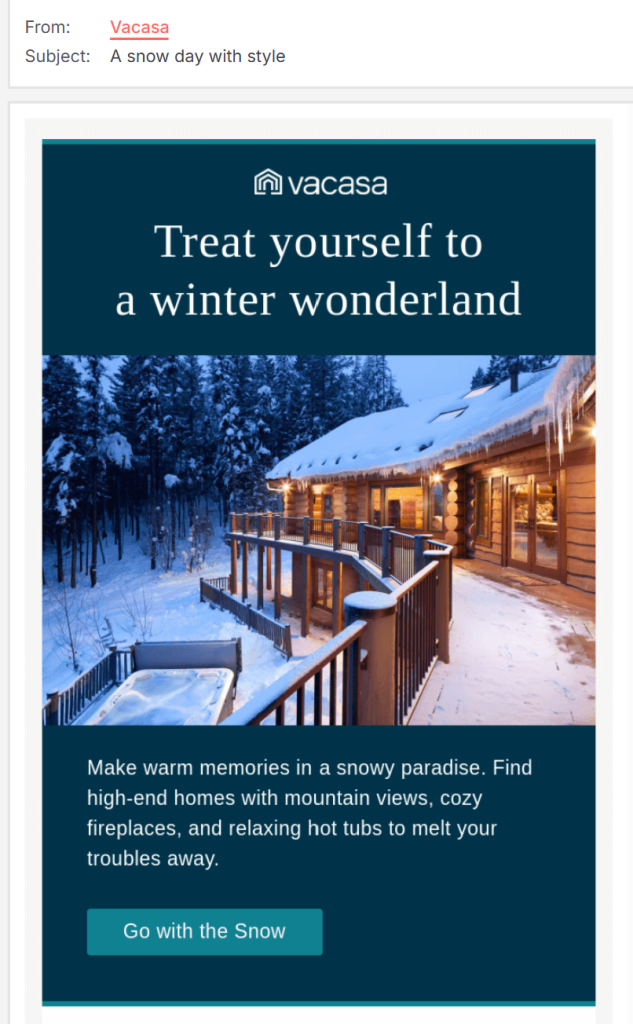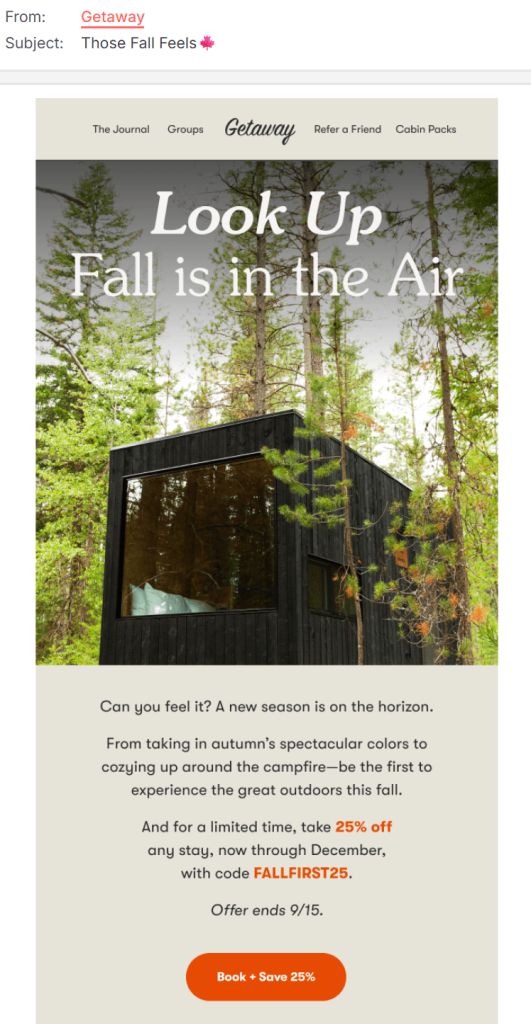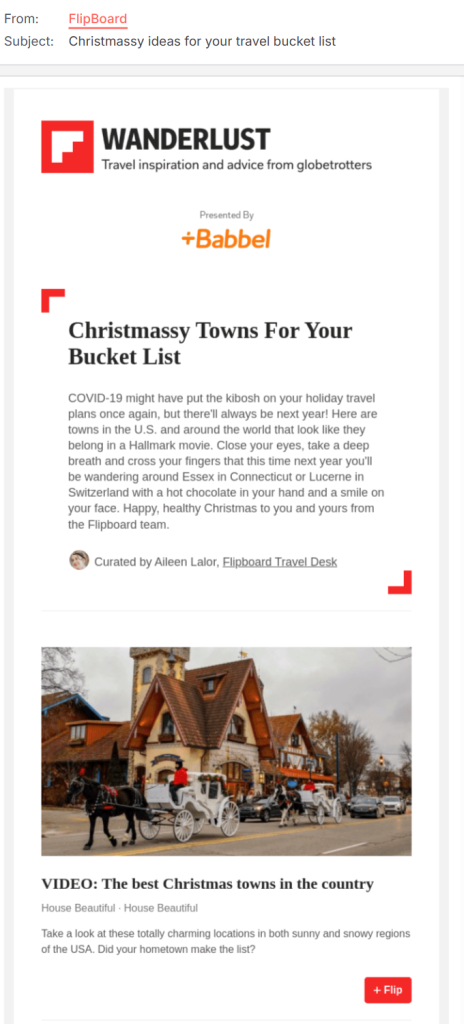- Home
- Email Tips and Tricks
- Travel Email Timing: Why Ski T ...

A reminder about the beauty of cherry blossoms in Japan in the middle of grey November might sound nearly cynical. Advertising ski slopes in July sounds borderline crazy. As you see, email travel marketing is highly seasonal—at the same time, it is also complex.
Travel plans are usually made quite well in advance, especially for international travel. That means email marketers need to find a good in-between: speak to their readers in a way that both motivates them to make long-term travel commitments while at the same time picking them up where they currently are. This balance might be the main challenge for many travel marketers: when is the right moment to remind clients in the wintry northern hemisphere that summer exists somewhere else? When is the right moment to get the talk about holiday trips going?
In this article, we will touch upon this complex yet exciting topic and show you how to make email timing your advantage.
Why Timing Is Everything in Travel Emails
Emails in email marketing do have several focal points. It might be personalization and adjusting your emails to the interests of a particular audience; it might be certain holidays; and, of course, it might be timing. The latter is particularly relevant for traveling, where offers change a lot with seasonality. In fact, seasonality is a very important factor both in the travel industry and in travel email marketing (of course, if you want to be successful).
A timely seasonal email offer works much better with readers’ current travel mindset. What does it mean? It means that when you send a proposal for an incredible skiing trip one month before Christmas holidays, it will fit people’s mindset much better and will be much more efficient than if you send the same offer sometime in the middle of summer. So, when your message arrives at a time when people are actually dreaming of that trip, it will perform much better than the same offer sent at the wrong time. The lesson here: don’t waste your ideas—send them at the right time.
Summer Travel Emails: Sunshine, Beaches, and School Breaks
For many destinations, summer is the peak season. It makes perfect sense since it is the time when families have school breaks, people take vacations from work, and the weather itself creates the right mood for traveling. So, if you want your summer travel email to work, you need to match the email timing with the period when people already think about summer holidays—meaning a little bit in advance.
The types of emails that work best here are the ones that reflect everything good that summer can offer. It can be family-friendly packages that solve the question of where to go with children. It can be road trips that people associate with freedom and adventure or some tropical getaways that speak to the desire of many people to enjoy beaches and warm weather. So, if your summer travel emails go in this direction, they have a high chance of getting deserved attention.
Finally, do not forget about the right subject line that goes with your offer. Use lines that make people think about holidays, fun, and relaxation without any extra effort. Something like “Pack your flip-flops, your best summer deal is here.” And if you use such subject lines in the right moment, they will feel natural and work much better than if you use them out of season.

Winter Travel Emails: Snow, Skiing, and Cozy Getaways
Winter is for people who are chasing snow or who want that special holiday magic. It’s not about flip-flops or beaches anymore. It means if you want your winter travel email to work, you need to talk about that. Highlight ski resorts, winter festivals, Christmas markets, or even wellness retreats. These are the things people connect with when they are planning their winter trips.
Just like with summer offers, timing is everything here: if you send such offers in December, many people will have already booked, but if you start earlier, like in September or October, you will reach them at the right moment—when they are actually making decisions.
If your winter travel email is about winter holidays in Lapland or Aspen, launch it early and give people time to plan. When you show people snowy landscapes and reindeer or ski resorts in autumn, it feels right because they are already thinking about winter. If you send the same in July, it just makes no sense.

Shoulder Season Travel: The Secret Weapon
Shoulder seasons are spring and autumn. They might be less iconic than winter and summer holidays, but they have their particular advantages. Traveling in those seasons is cheaper, they’re less crowded, and the weather can still be great. So, many people who are budget-conscious or simply have the flexibility to travel whenever they want pick these seasons instead of going in the middle of summer or deep winter.
The email angles that work best shall make an accent on efficiency. You can use phrases like “travel smart,” “beat the crowd,” or “save big” to outline the obvious value of traveling during spring–autumn seasons. This is where email timing again plays its role: if you launch these campaigns in advance of shoulder months, you give people the exact incentive they need to choose those seasons.

Holiday Travel Campaigns: Timing Around Special Dates
Holidays are occasions that shape how people think about travel. They bring a specific mood, which impacts the way your emails look and also when they should arrive. A holiday email shall arrive at the moment when people are already starting to think about it, but not right before the holiday. Let’s see how it can look for some of the most popular holidays out there:
🎄 Christmas. People plan Christmas trips early because flights and hotels get booked out fast. So, for your Christmas campaign to work, you start as early as September or October with inspiration and then push actual deals in November. In your emails, show people ski trips, winter resorts, or even cozy city breaks with Christmas markets.
🥂 For New Year’s, the planning window is similar. People want to be sure they have somewhere special to celebrate. So you should begin in the fall with ideas and follow up with deal emails in December, when the urgency gets stronger.
💌 With Valentine’s Day, the booking window is shorter. People usually start thinking about it in January, so your emails should appear right after New Year’s, giving enough time for couples to decide. The best email content here (check out this free HTML template for Valentine’s Day in Paris) is romantic getaways, spa weekends, or even short city escapes for two.

Finally, if you know your customers well, you can use some of their special occasions, like birthdays, to offer them some special getaways. Local festivals can also be a big reason to travel. Regardless of the reason, the main thing is that you have to know the timing of the event and send your email campaign at least a couple of months before.

Timing Within the Season
As we already mentioned, it’s important to find the right timing for your emails. If you send too early, travelers aren’t in decision mode yet and may just ignore you. If you send too late, flights, hotels, or tours may already be booked. So, choosing the right time does not just stop at picking the right season. Within every travel season there are smaller booking cycles, and one email might not be enough. What works better is sending a sequence of emails where each one arrives at the right moment.
💎 Awareness emails—send them months ahead. These are the ones that inspire people and put the idea of a trip into their minds. For example, for summer holidays, you can start inspiring as early as March or April, while for winter getaways, you can do it in September or October, before people lock in their ski resorts or holiday plans.
💎 Follow up with deal emails a few weeks before the actual season begins. This is the time when travelers are already looking for concrete options, so your offers will feel very useful.
💎 Finally, you have the last-minute notices right before the peak. These emails are for those who wait until the very end to book, and they often respond quickly if the offer is right.
Geographic Nuances: Seasons Aren’t the Same Everywhere
One thing that is easy to forget is that seasons are not the same all over the world. When it’s winter in Europe, it’s summer in Australia. If you send out a winter travel email in December to your whole list, someone in Sydney is going to look at it and wonder what you are talking about. That’s why the same seasonal email cannot work for everyone if your list is global, because people live in different climates and different booking realities.
It’s not only about hemispheres, though. Domestic travelers behave differently from international ones. Locals often book trips that don’t need a lot of preparation. International travelers are completely different. They plan months ahead, sometimes half a year, because they need to arrange flights, visas, hotels, and everything else. So, if you send your emails to both groups at the same time, your email timing will be wrong for one of them.
To avoid these pitfalls, use geo-segmentation. If you know where your recipients are based, you need to time your campaigns so they fit the season of your intended audience.
Quick Tips to Nail Travel Email Seasonality
✅ Build a seasonal content calendar so you don’t miss key periods like summer, winter, or holidays.
✅ Plan campaigns at least 2–3 months ahead, especially for big dates like Christmas or Spring Break.
✅ Reuse HTML templates for your campaigns and just change visuals and offers to match the season.
✅ Test send times—weekends might be good for research, weekdays for bookings.
✅ Segment your list by geography, because seasons aren’t the same everywhere.
✅ Use your blog newsletter to warm up clients ahead of seasonal offers—share travel tips, destination guides, or inspiration that fit the time of year.
✅ Keep an archive of your best-performing seasonal campaigns so you can reuse ideas later.
To Sum Up
In this article, we talked about cherry blossoms (spring), ski trips (winter), and of course, beach vacations (summer). At first glance, one would think that getting the timing right for travel email marketing is the easiest thing in the world.
But as we showed here, it’s more complex than this. Follow our guidelines and recommendations to create a strong content calendar that will leave your competitors wishing for a vacation of their own.
By combining the different types of email marketing approaches, you will make sure to really capture the attention of your readers. Inspire them to plan for the next weekend, the next season, and the next year. Because who says you can only plan one vacation at a time?



